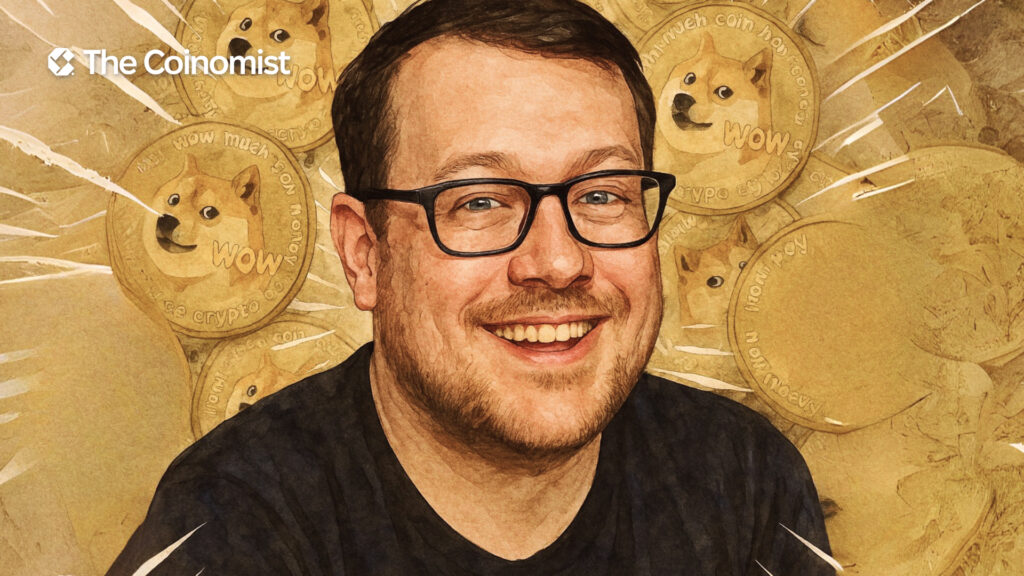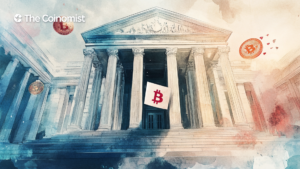Shibetoshi Nakamoto: The Man Behind Dogecoin and the Meme Revolution

Shibetoshi Nakamoto didn’t wear hoodies or chase venture capital. He never claimed he was going to reinvent finance or save the world with blockchain. He just cracked a joke.
On this page
- Portland, 1983: A Quiet Beginning
- The Joke That Launched a Billion-Dollar Coin
- Exit: Disillusionment, Harassment, and a Used Honda Civic
- The Meme Awakens: 2021 and Elon Musk
- Dogecoin’s Comeback During the Meme Market Surge
- Billy Markus Stayed on the Sidelines
- The Memecoin Madness: 2024 and the Second Wave
- From Internet Jokes to a $120 Billion Market
- One Tweet, One Joke, and a 5% Jump
- The Reluctant Prophet
- The Legacy of Shibetoshi Nakamoto
A joke that was absurd, clever, perfectly timed, and somehow sparked a revolution.
The real name of Shibetoshi Nakamoto is Billy Markus. When he created Dogecoin in 2013, he meant it as a joke. A meme. A lighthearted response to the overly serious tone of the early crypto scene. But memes carry a certain power, and Billy’s creation, driven by internet culture and genuine community energy, turned into something far bigger than he ever expected.
Now, more than ten years later, when memecoins shape online culture, surge by 500%, and bring a new generation into crypto, people are once again looking back at the man who started it all. And they're asking what he thinks about a revolution he never planned to lead.
Portland, 1983: A Quiet Beginning
Billy Markus was born in 1983 in Portland, Oregon. He wasn’t a prodigy or a rebel. He didn’t grow up wealthy. But he had a logical mind, a knack for programming, and a love for video games like World of Warcraft.
He steadily built a career at IBM, one of the most conservative tech companies. The job was reliable. The future looked stable. It fit the definition of the American Dream—at least on paper.
But beneath the corporate routine, Markus had a playful side. He enjoyed internet culture. He understood memes before mainstream brands started using them. Then, one weekend in December 2013, he stumbled across something that made him laugh.
And that moment ended up changing his life.

The Joke That Launched a Billion-Dollar Coin
In late 2013, Jackson Palmer, an employee at Adobe, bought the domain dogecoin.com as a joke. The website mocked the overly serious tone of Bitcoin, featuring a Shiba Inu dog and text in Comic Sans. However, it wasn’t a real coin. It was just a meme.
Markus came across the site and saw something more.
I ran across the website randomly and thought it would be funny to make the actual Dogecoin. I threw it together in a few hours,
he later said.
He reached out to Palmer, and they decided to collaborate. Billy built the project over a single weekend, using the code from Bitcoin and Litecoin. The goal? A playful parody of the crypto world.
Dogecoin launched on December 6, 2013.
Markus and Palmer thought the project would fade out quickly. Instead, it took off.
People didn’t just buy Dogecoin. They used it to tip others, traded it, raised money for charity, and even sponsored a NASCAR team. It grew into more than a digital currency. It became a real community.
Back in the day, people tipped Doge on Twitter. It was worth fractions of a penny, but it felt good to get a bunch of Doge,
Markus recalled.
Exit: Disillusionment, Harassment, and a Used Honda Civic
By 2015, the lighthearted spirit was gone. The Dogecoin community had grown darker, increasingly obsessed with price instead of irony. Markus, who never profited from the coin, became a target.
People doxxed him. They sent threats. They harassed him.
He sold his remaining Dogecoin, which barely covered the cost of a used Honda Civic, and stepped away.
It felt like there was so much attacking and negativity toward me. I left around 2015 as the community started to shift from one that I was comfortable with,
he later recalled.
Billy returned to a quieter life. He began developing educational software for children and stayed anonymous. His avatar, a cartoon Shiba Inu in a space suit, became more recognizable than his real face.
But the story didn’t end there.

Related: Dogecoin ETF: Could 2025 Be the Year?
The Meme Awakens: 2021 and Elon Musk
Dogecoin’s Comeback During the Meme Market Surge
In 2021, as the GameStop story took over the internet, Dogecoin returned—not just as a joke, but as a symbol of resistance. At that time, investors were looking for fun, for influence, and for memes.
Then Elon Musk stepped in.
The Tesla CEO started mentioning DOGE in tweets, interviews, and even during his appearance on Saturday Night Live. At one point, Dogecoin’s price jumped by 13,000%.
Billy Markus Stayed on the Sidelines
And Markus? He kept hanging out on Twitter. He kept posting memes. And he kept his skepticism.
The reason why people think crypto is 95% scams and garbage… is because crypto is 95% scams and garbage,
he wrote after the LUNA collapse.
Markus didn’t try to profit. He didn’t promote new tokens. He didn’t sell courses or flood the market with NFTs (aside from maybe a couple).
Instead, he simply watched—sometimes with a grin, sometimes with disbelief—as the world spun around a coin he had created over a single weekend.
Related: Will Dogecoin Ever Reach 1$ with Elon Musk’s Push?
The Memecoin Madness: 2024 and the Second Wave
From Internet Jokes to a $120 Billion Market
By 2024, the memecoin market had either fully matured or completely gone off the rails, depending on who you ask. The total market cap jumped from $20 billion to $120 billion in just one year. Tokens like Dogwifhat, Fartcoin, and Goatseus Maximus became viral sensations.
The platform Pump.fun launched more than 4.4 million tokens. Political tokens such as BODEN and MAGA made headlines. One project even raised $42 million to help a young girl battling cancer.
And Dogecoin? Still going strong. Still a favorite.
Crypto doesn’t die when the price goes down. It dies when no one cares anymore. As long as people use it and have fun with it, it lives,
Markus said in a 2022 interview.
One Tweet, One Joke, and a 5% Jump
Markus kept posting on Twitter. He stayed out of the spotlight, but his voice still mattered. At one point, he jokingly tweeted that he was unemployed. Elon Musk quickly replied,
Wanna work at @DOGE? Would be kinda perfect.
That short exchange was enough to send Dogecoin's price up by 5%.
The meme still held power. So did the person who started it.
Related: Millions With DOGE? Glauber Contessoto’s Investment Experience
The Reluctant Prophet
Markus never saw himself as a visionary. He didn’t predict the rise of NFTs, meme tokens, or crypto subcultures. And by his own account, he’s not particularly fond of crypto.
Dogecoin is Bitcoin with a dog on it. People gamble. That’s what they want right now,
he said.
Moreover, he openly criticizes the cult-like mentality in the crypto community. He doesn’t hold a big stash of Bitcoin. Shibetoshi Nakamoto likes Ethereum mainly because it helped him sell a couple of NFTs. And he avoids making predictions about Dogecoin.
We came up with a mantra in 2014: ‘One Doge equals one Doge.’ The price will go crazy. Who knows. Just have fun with it.

Related: Bitwise Files for Dogecoin ETF: A Step Closer to Approval
The Legacy of Shibetoshi Nakamoto
By 2025, Dogecoin has become more than just a cryptocurrency. It’s a language, a joke, a flag, and an idea. A meme with bite.
And behind it all, still watching with a mix of weary irony and blunt honesty, stands the man who never wanted to lead.
Billy Markus, known as Shibetoshi Nakamoto, reminds us that not every revolution starts with a manifesto. Sometimes, it begins not with drama, but with Comic Sans.
He didn’t try to change the world. He simply created something strange and stepped away.
And somehow, that changed everything.
The content on The Coinomist is for informational purposes only and should not be interpreted as financial advice. While we strive to provide accurate and up-to-date information, we do not guarantee the accuracy, completeness, or reliability of any content. Neither we accept liability for any errors or omissions in the information provided or for any financial losses incurred as a result of relying on this information. Actions based on this content are at your own risk. Always do your own research and consult a professional. See our Terms, Privacy Policy, and Disclaimers for more details.

























